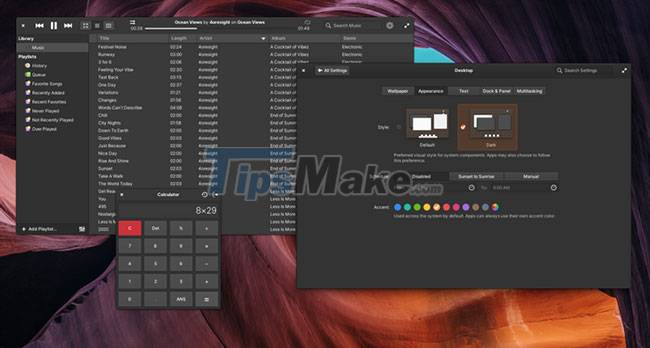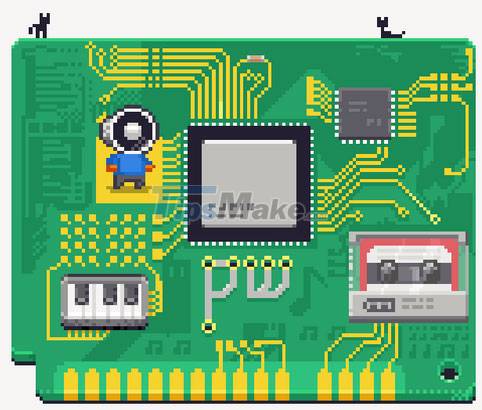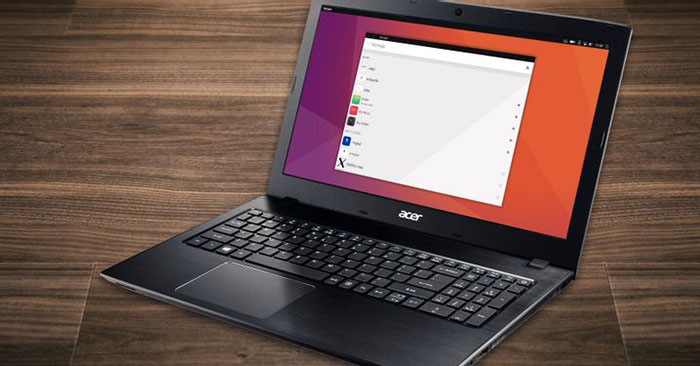5 major developments in Linux desktop in 2022
Linux development takes place openly, but unless you know where to look for information, it's easy to miss something important. Here are some of the key developments you should keep an eye on.
1. Distros accept Flatpak for app distribution

Installing software on Linux has long been a complicated affair. Windows has an EXE. macOS has DMGs. Linux already has DEBs, RPMs, PKGs, tarballs, and the list goes on. A software package you may install on one distribution will not work on another.
In recent years, users have seen attempts to solve that problem with universal package formats, no matter what version of Linux you use, like AppImage or Snap. But among them, Flatpak is gaining the most traction. This option simplifies the application delivery process. Applications that were previously available only for elementary OS as DEB are now available for any Linux distribution as Flatpak.
With GNOME apps, you'll have to wait six months to install the next version of GNOME, which is available on Flathub on day one. And commercial, proprietary applications that are not aimed at Linux can now be installed with a single click.
Snap and AppImage are not gone yet. Snap, in particular, is Ubuntu's preferred format and probably has the largest number of downloads. But Snap's appeal simply didn't extend outside of Ubuntu, with even Ubuntu-based systems like elementary OS and Linux Mint choosing not to provide support for snap packages in the first place.
2. Dark theme becomes standard

Dark themes have become mainstream. Android, iOS, Windows and macOS all have these themes. People are more aware of the effects of blue light and LCD screens on their eyes. Some of us are especially sensitive to bright pixels. Many people choose to turn on the dark theme at least for a while at night or when working with multimedia files.
Dark themes have long been available for Linux. In recent years, elementary OS has been rated as an outstanding Linux desktop for creating a dark theme and paying great attention to it.
The team has advocated for this feature to become widely available across Linux desktops, multiple developers have worked together, and the feature has become a hallmark of desktop applications and environments. desktop can be easily supported.
Dark theme support has been introduced into the two largest Linux desktop environments, GNOME and KDE Plasma. Now, many apps and themes are better adapted to dark themes.
3. Using Libadwaita in Modern App Design
There are many Linux desktop environments, but most of them share a set of graphical tools called GTK. GTK was born many years ago during the development of the popular GNU Image Manipulation Program (GIMP). Now, it is most commonly associated with the GNOME desktop environment.
Other desktop environments that choose to use GTK are influenced by GNOME's design decisions. Desktops like Cinnamon and Xfce use a more traditional layout with classic menu bars, but some of the applications they use are designed with GNOME's more modern language.
The toolkit is oriented towards GNOME priorities because GNOME developers do most of the work. With the release of Libadwaita, GNOME is separating GNOME-specific elements from GTK. This allows other GTK-based desktops to continue using the toolkit without having to work with GNOME-focused elements.
At the same time, Libadwaita allows GNOME applications to use all kinds of modern visual elements common on smartphones, but not yet standard on Linux desktops. Examples include in-app gestures and sliding animations between different app pages. These additions don't just affect GNOME applications. elementary OS is also using aspects of Libadwaita.
4. PipeWire simplifies multimedia production

Multimedia on Linux can be a complicated affair. When it comes to audio, there used to be JACK, ALSA. PulseAudio and now PipeWire.
On the surface, adding another media server doesn't seem like the way to make things simpler. But setting up JACK can take hours to learn, while PipeWire is much simpler.
PipeWire isn't exactly the best choice, but it does make some jobs easier. As technology evolves, it could make Linux an easier, recommended solution for tasks like music creation and podcast production.
5. Steam Deck Improves Gaming on Linux
Gaming on Linux has come a long way. Although it does not surpass Windows, in some cases, Linux actually works more efficiently. And when comparing Linux to macOS, Linux is the easier gaming choice.
Not long ago, Linux users had to overcome many hurdles to get up and running. While this is still not an uncommon experience, many games are now simpler to operate. Thanks to Proton, you can download a Linux-compatible game from Steam with the expectation that it will run without much fuss.
With the release of the Steam Deck, there's a chance developers will work to make sure their games work well on Valve's game consoles and, in general, Linux PCs. Because in the end, the Steam Deck is still just a PC running the Linux operating system.
And if anti-cheat support becomes ubiquitous on the Steam Deck, it means more support for anti-cheat for regular Linux desktop games. This is important information for all those games that Linux players can play offline but are not allowed to access online.
Are you excited about the changes to Linux in 2022?
Desktop Linux is really making great strides. Sure, it hasn't captured much market share yet, but there's no reason not to enjoy this hidden gem.
With more computers pre-installed with Linux than ever before, the barrier to entry is much lower. Linux is becoming easier to use by the day, and there are a lot of changes to look forward to in 2022.
You should read it
- 5 ways to make Linux desktops look great
- 5 reasons why Linux distros create their own desktop environment
- 5 reasons to use Linux desktop instead of WSL
- How to check the desktop environment you are using on Linux
- 5 ways Librem 5 phones affect Linux desktop
- Should I use Linux desktop KDE or GNOME?
- 6 best Linux desktop environments in 2022
- How to run Linux desktop using Windows Subsystem for Linux
- Differences in the types of desktop environments on Linux
- Learn about Linux MATE desktop environment
- Run remote Linux workstation in Windows
- How is Mobile Linux different from Desktop Linux?






 5 ways to make Linux desktops look great
5 ways to make Linux desktops look great 5 reasons why Linux distros create their own desktop environment
5 reasons why Linux distros create their own desktop environment 5 reasons to use Linux desktop instead of WSL
5 reasons to use Linux desktop instead of WSL How to check the desktop environment you are using on Linux
How to check the desktop environment you are using on Linux 5 ways Librem 5 phones affect Linux desktop
5 ways Librem 5 phones affect Linux desktop Should I use Linux desktop KDE or GNOME?
Should I use Linux desktop KDE or GNOME?